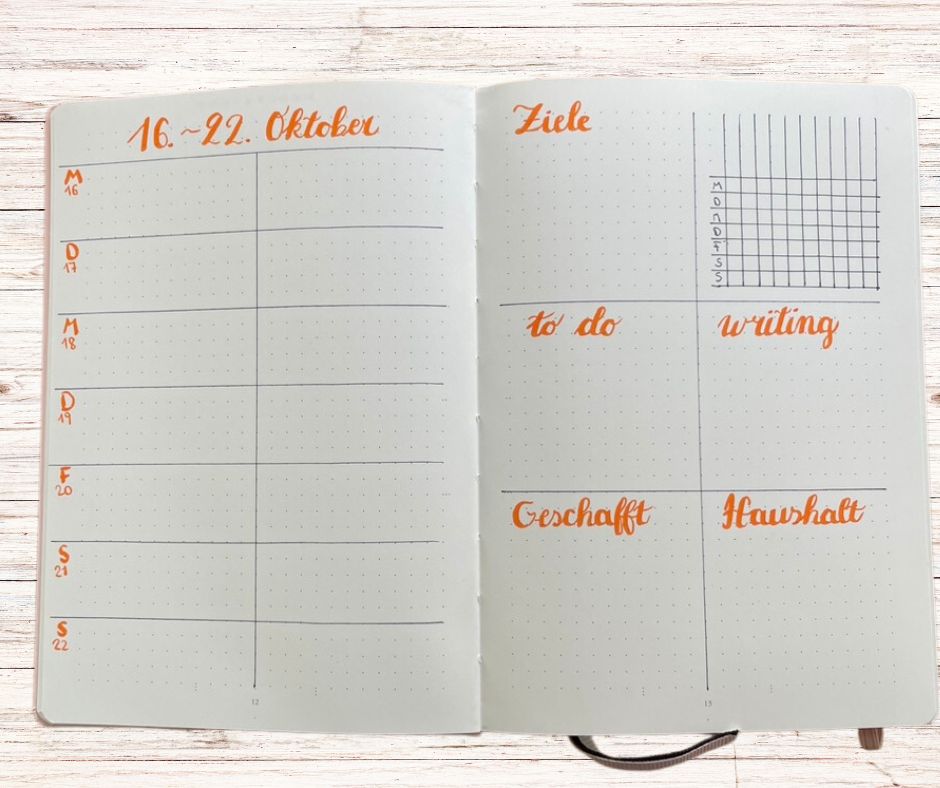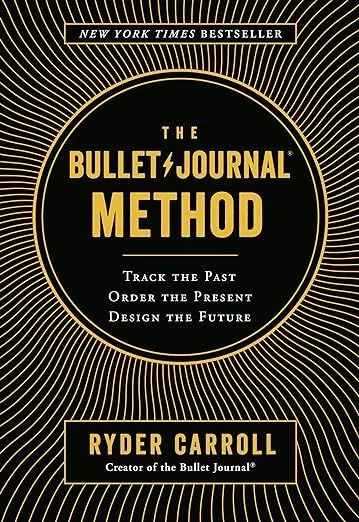I have been using a bullet journal for over 7 years now. It evolved, changed and changed again over the years. Currently, I’ve deviated from the initial idea and now prefer using a weekly spread, as it suits me and my thinking style better. But that’s the beauty of bullet journals. You can tweak and adapt it, so it fits you personally.
Here you can see my weekly spread, which has evolved and changed over the years to this layout – which I am sure won’t be final. In the top right corner you can see a tracker, which I use for symptoms, but also for a medication and self-care log. And yes, the mixture of German in English is how my mind works. 😉

Here are 10 ideas for bullet journaling tailored for us with chronic illnesses:
Symptom Tracker
As I wrote a few weeks ago, you have to decide whether it is helpful for you to track your symptoms or not. I use it in combination with my medication log to see how those might influence symptoms as well. You can use color-coded symbols or a rating system to easily identify and track changes over time.
Medication Log
Keep a detailed log of medications, dosages, and schedules. This can help you ensure you’re staying on top of your treatment plan.
Pain Journal
Use a pain scale to record pain levels throughout the day, along with potential triggers or patterns. You may be surprised what connections will become visible!
Treatment Effectiveness
Dedicate a page to assess the effectiveness of different treatments, therapies, or lifestyle changes. Make note of what’s working and what isn’t.
Doctor’s Appointments
Keep a list of your future and past medical appointments, including any questions you have and notes on your doctor’s advice.
Mood Tracker
Chart your emotions to identify links between mood and symptoms. This can help you manage stress and emotional health.
Food Diary
Keep a journal of your daily food and beverage intake. Note any dietary triggers or patterns related to your condition.
Gratitude Log
Keeping a gratitude journal can improve your well-being and help you focus on the positive things in life, instead of the challenges of chronic illness.
Goal Setting
Set achievable goals related to your health and well-being. Track your progress and celebrate your successes, no matter how small.
Self-Care Routine
Make a self-care checklist or routine with activities to help you relax and deal with your condition, like meditation, light exercises, or hobbies. This could also go into a larger habit tracking page together with your symptom and medication tracker.
Remember, your bullet journal is a personal and customizable tool. You can adapt these ideas to suit your specific needs and preferences. Plus it can also help you at appointments with your doctors, because you can show them, if there are any changes etc.
Btw, you don’t need any fancy journal for a bullet journal. I personally find the official bullet journal more appealing because it already includes handy page dividers. But any notebook is okay, and you don’t have to create Instagram-worthy pages. You can keep it as simple as you like or add colors, wash tape and stickers to it, if you like.
Today I want to recommend a book called “Bullet Journal Method: Track the Past, Order the Present, Design the Future” by Ryder Carroll. It is a fundamental book about bullet journaling, written by the creator of the method. His book gives you a great start in bullet journaling! As he has ADHD himself, his goal was to create a method that would work with his way of thinking. And if you suffer from brain fog, it might also work for you! It did at least for me. You can find it here on Amazon! (Please note that this is an affiliate link!)


